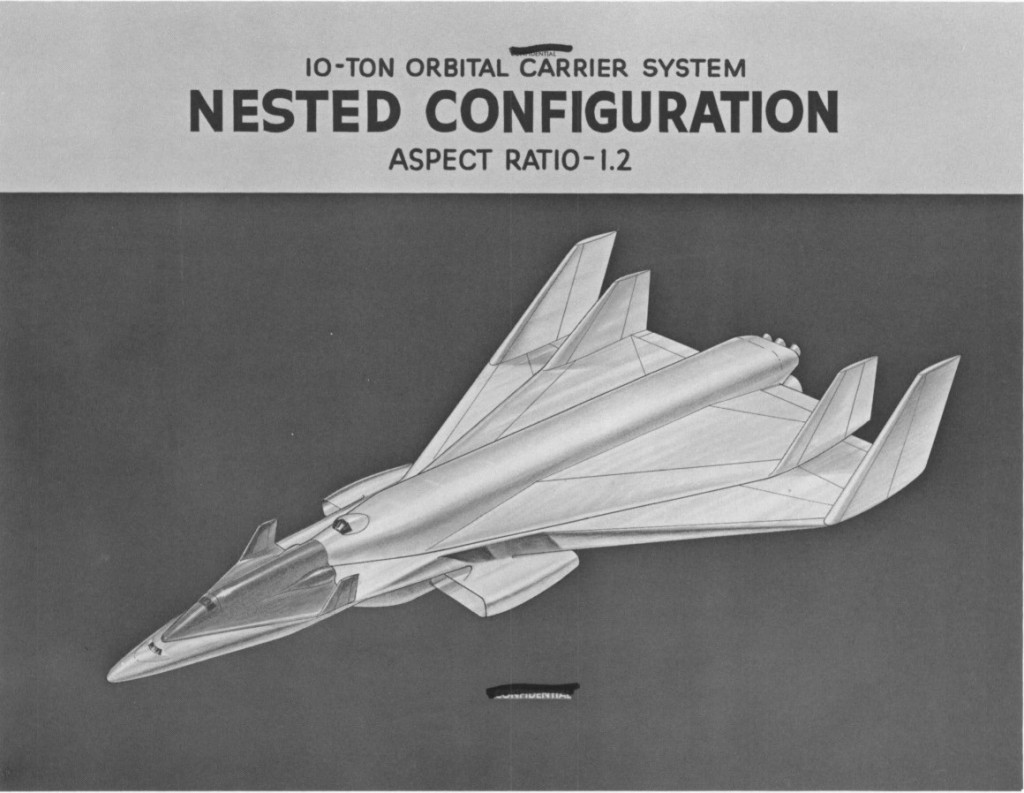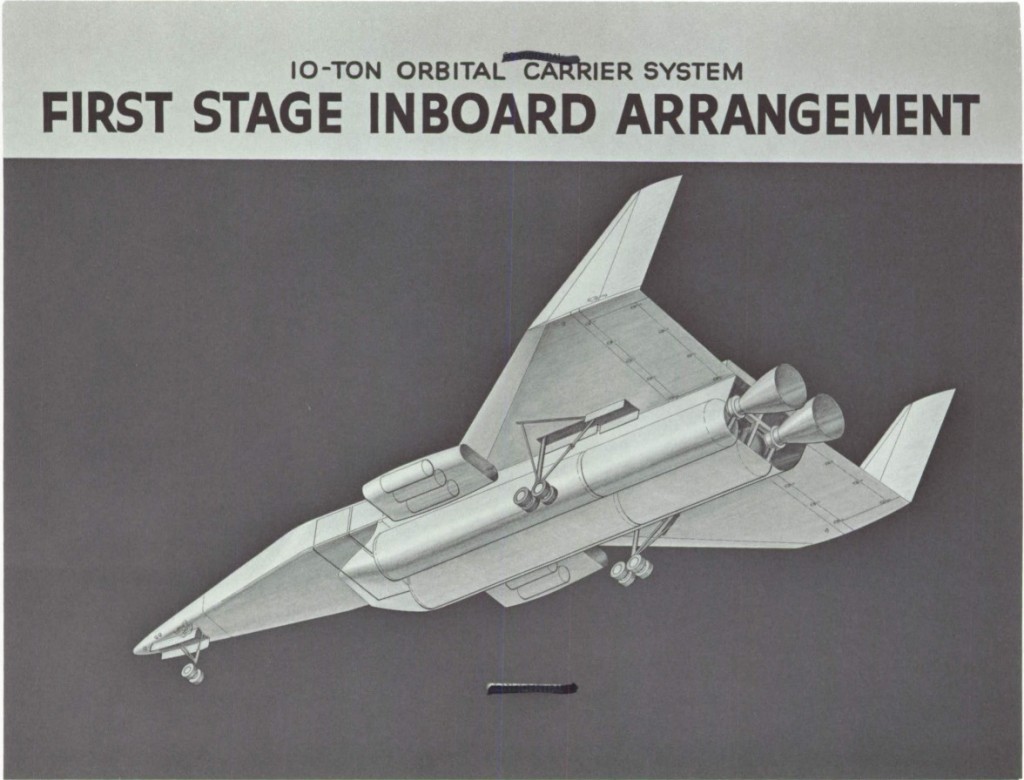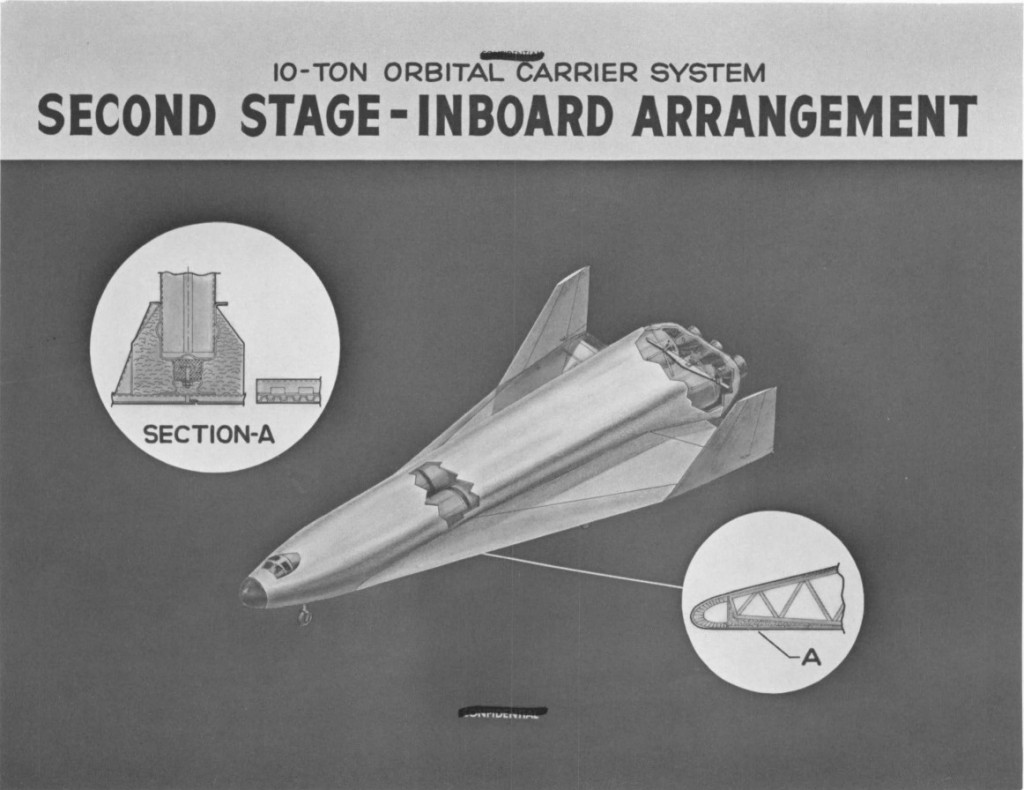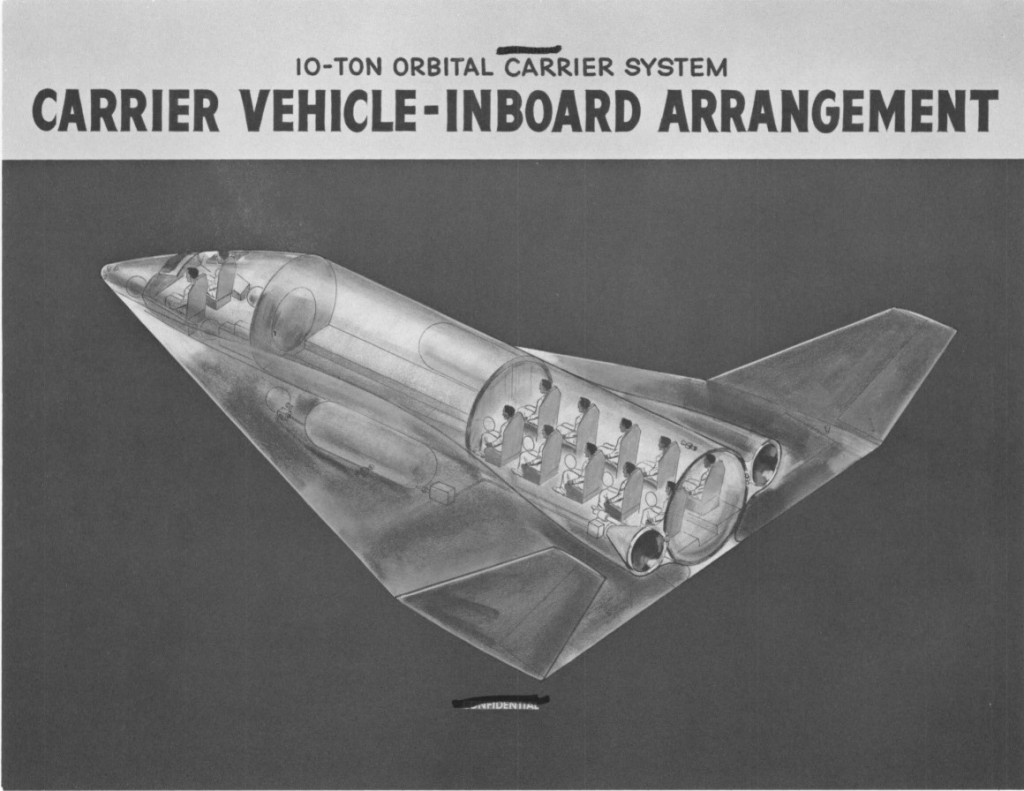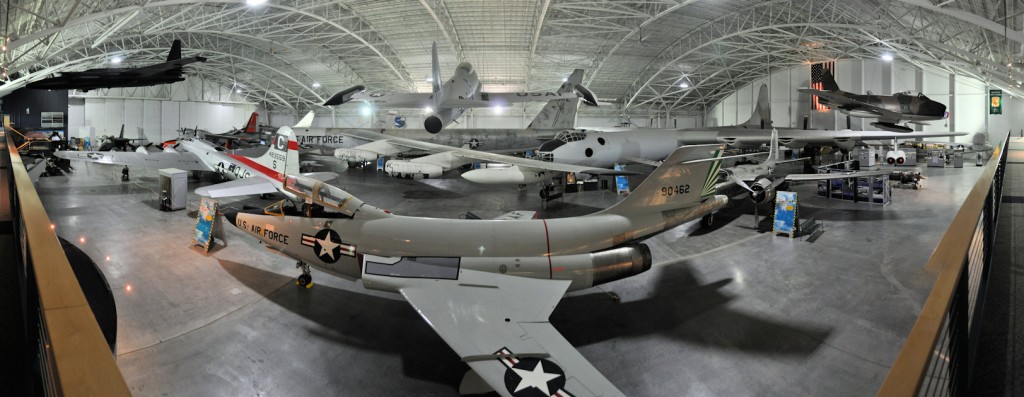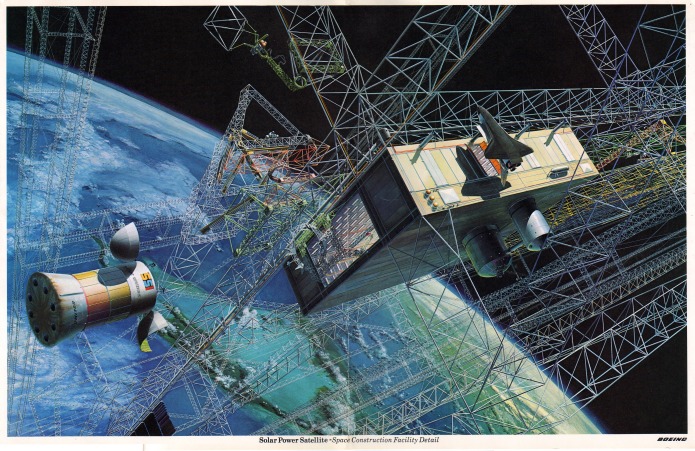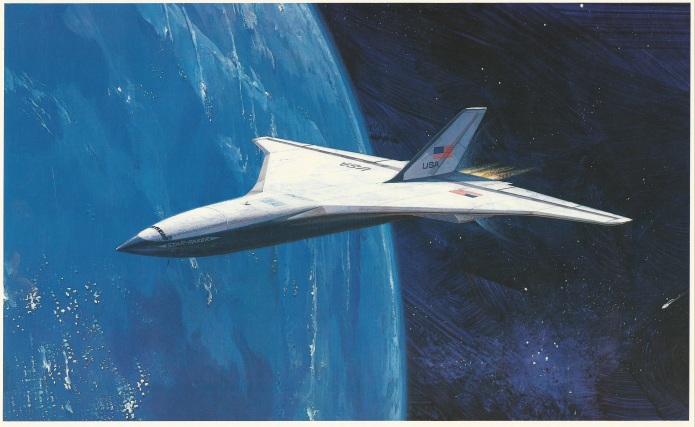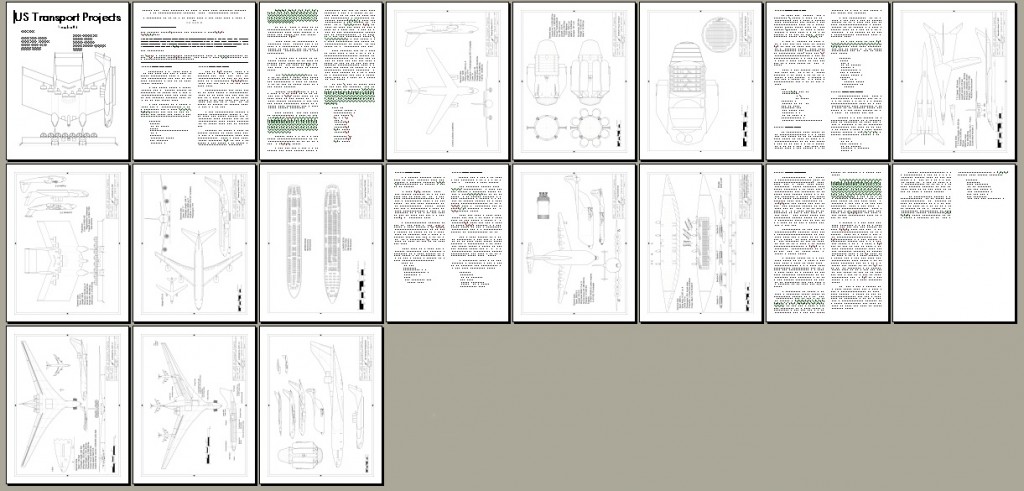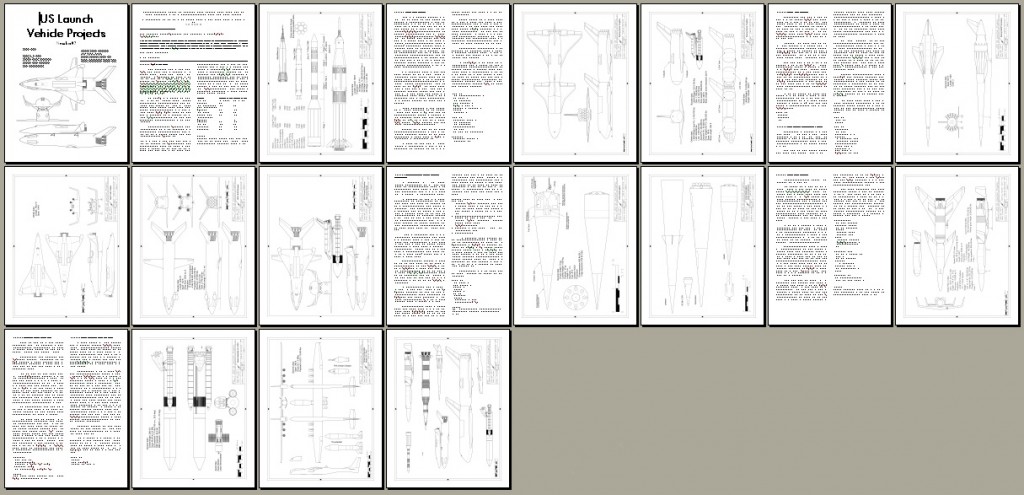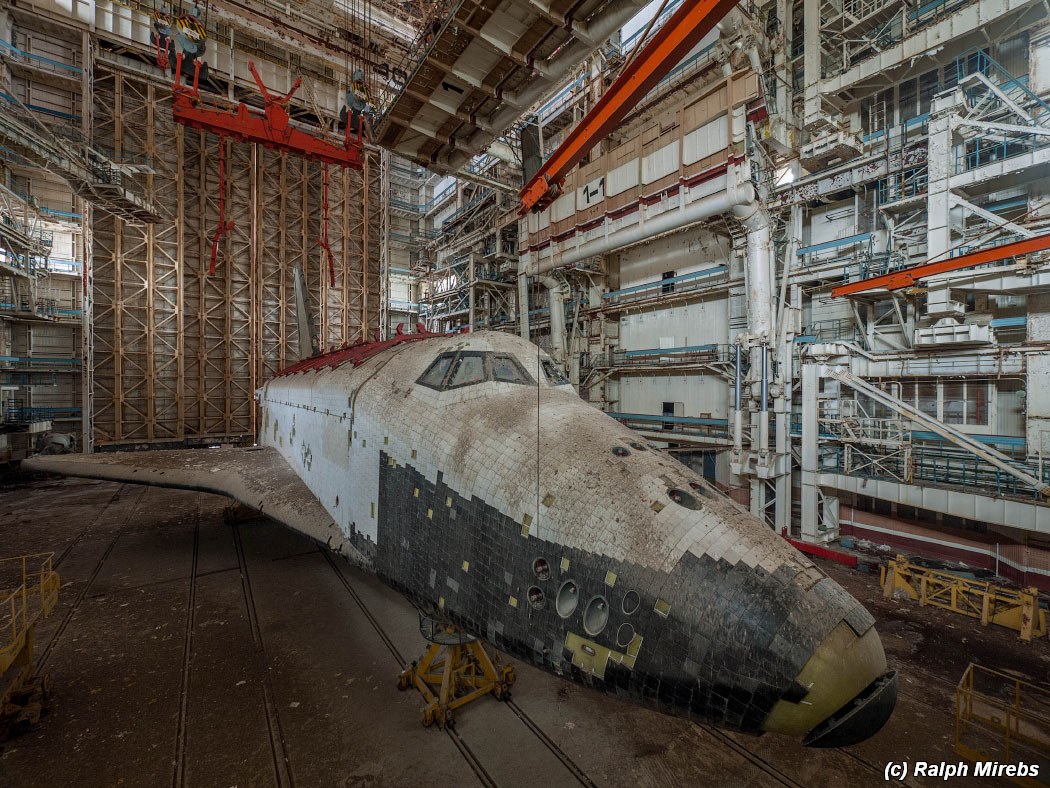Avast amount of work was put into space-based weaponry during the SDI days, but the bulk of that work has remained tucked behind security classification. Artwork was released publicly from time to time, but with rare exceptions that artwork was pretty clearly either not based on actual engineering design work, or was stripped of important features.
In all my digging I’ve found a grand total of *one* illustration of a space based railgun that I’m fairly confident represents a serious design effort. Sadly dimensions were lacking… but the design included a nuclear reactor and radiator system was was very likely an SP-100. While the SP-100 system itself appears to have been in constant flux, scaling the whole assembly from the size of the radiators leads to something I’d estimate accurate in scale within +/- 15%.
For a future USSP release, I decided to include this railgun as I included the Zenith Star laser in issue #1. The easiest way to make good 2D diagrams for something this complex is to make a 3D CAD model based on the sketch, including the SP-100. I didn’t know how big the railgun was supposed to be; I didn’t try to scale it until I had it largely put together with the SP-100 in place. And boy, is it *not* small:

The shuttle is of course to scale.
Several details lead me to think that this General Electric concept is on the up-and-up:
1) It includes the SP-100. This was often (not always) left off of images for public consumption.
2) It includes *very* large planar array radar for targeting warheads thousands of kilometers away, something I’ve *never* seen elsewhere, but which is pretty obviously important.
3) It has a fairly substantial, though unclear, storage for LOX and LH2 hidden behind a thermal shield/radiator. Note: the nuclear reactor was to keep the system running for years while awaiting The Day, and for running systems like computers and radar and such. But the power needed for the railgun was vastly more than the SP-100 could provide; the LOX/LH2 would run a turbogenerator to crank out the megawatts needed to make the gun go bang.
4) It doesn’t look “sci-fi cool” so much as it looks like a “great big thing built in space.”
Launching this monster would have been a hell of a chore. Presumably it would go up in pieces atop an ALS booster, and there assembled by a human crew launched via shuttle.
